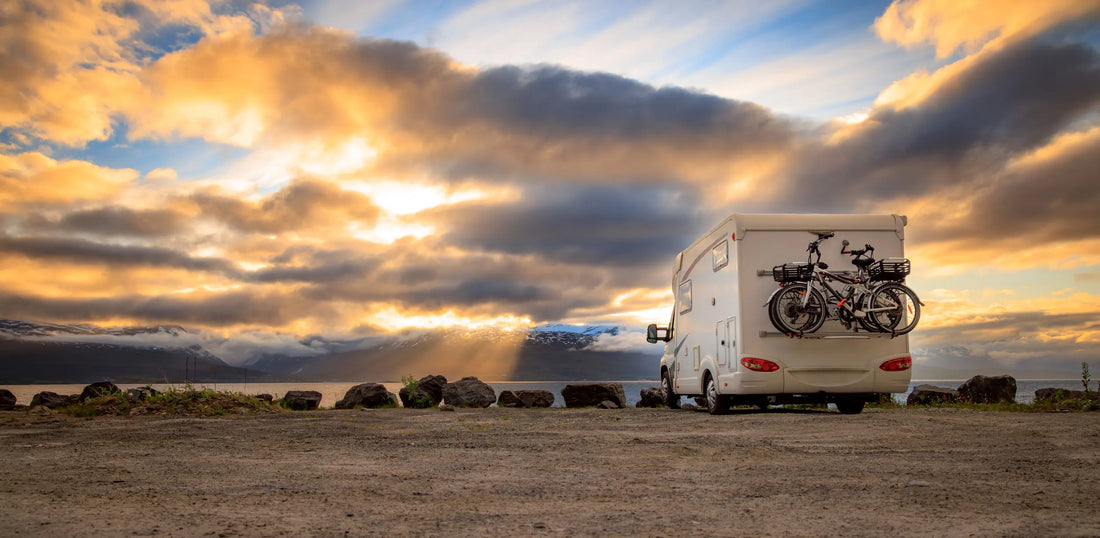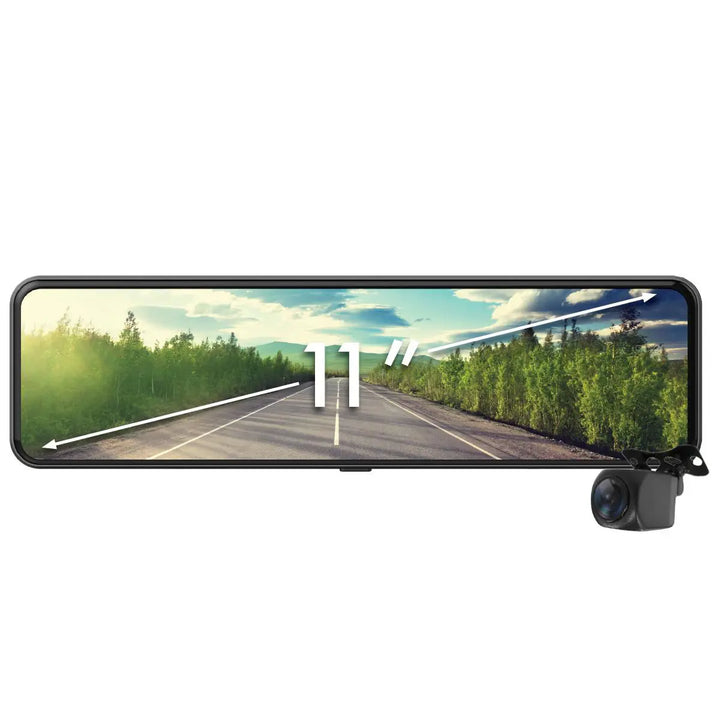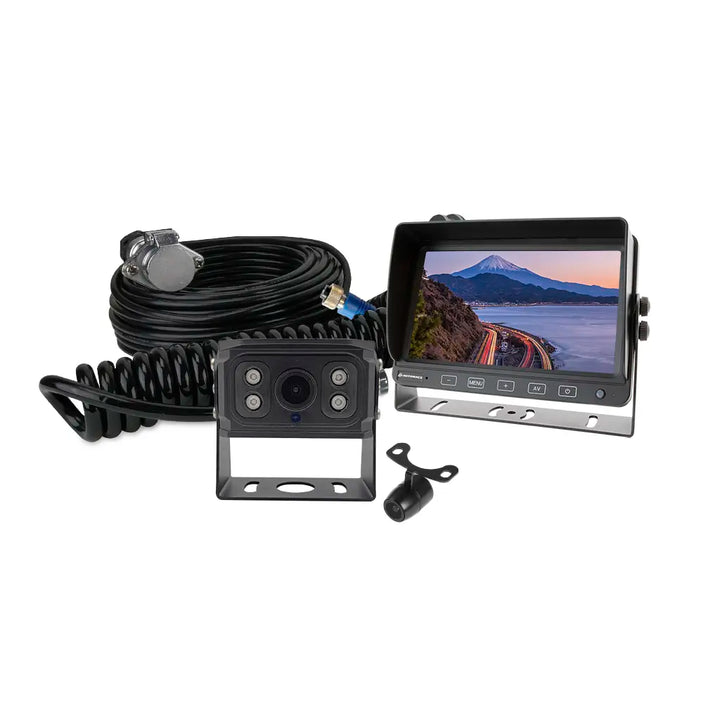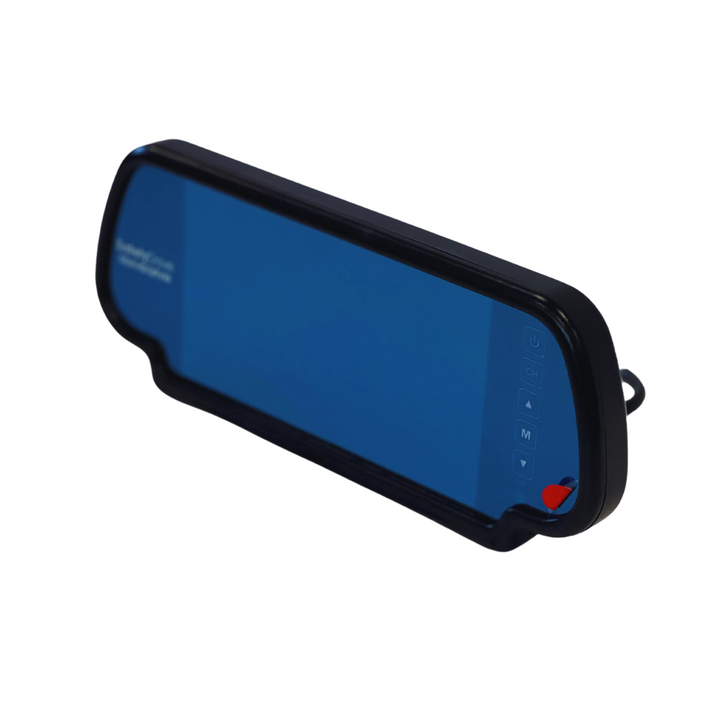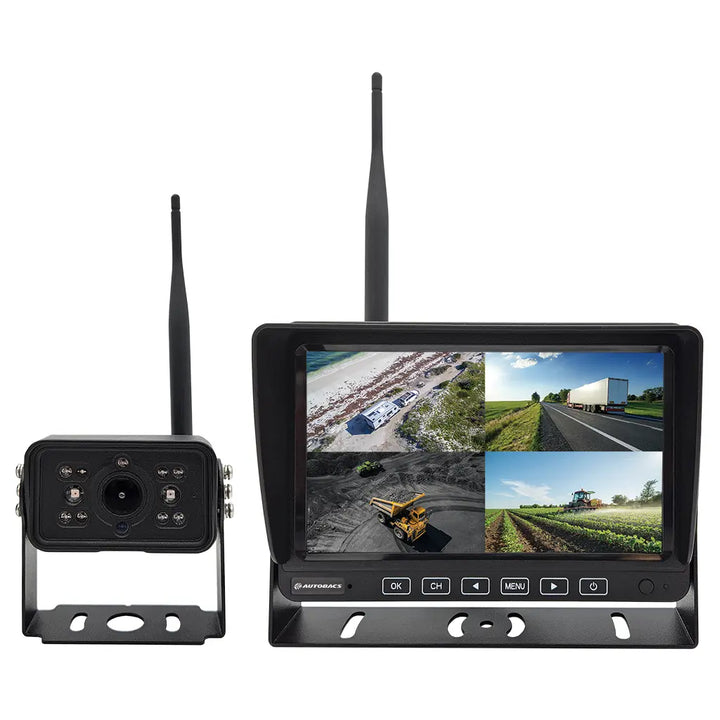The problem is familiar: pile kids, camping gear or a canopy into the car and your interior rear view mirror turns into a dark rectangle.
A front/rear DVR mirror solves that in one move. It straps over the factory rear view mirror, streams a live image from a camera mounted at the back of the vehicle, and records day and night while you drive. The Autobacs 11" Eagle M is a good example - big enough to feel natural, discreet enough to avoid turning the windscreen into gadget city.
Why a mirror cam instead of a standard dash cam?
A conventional dash cam watches incidents; a mirror DVR also restores rear vision. Because the screen sits where you already look, lane changes feel calmer, blind spots shrink, and wet-night glare from lifted utes fades. With a swipe you can tilt the view, adjust brightness, or split the feed. Crucially, you get front + reversing camera footage on one card, which helps when insurance wants both angles.
Australian use-cases where it shines
- Towing a caravan or boat: the live rear feed acts as a wide digital mirror, letting you scan traffic before overtakes and check the hitch when you touch reverse gear.
- Tradie canopies and wagons stacked to the roof: cargo no longer blanks the mirror; the wide viewing viewing angle sees past headboards and drawers.
- Urban commuters: car-park nudges, sudden brake-checks, and lane merges become easier to document and easier to avoid.
- Regional runs: at dusk, night vision from the rear camera helps read following traffic through spray or red dust.
Reverse assistance that feels natural
Switch to rear view camera reverse and the screen fills with the back feed; add guidelines if your model supports them. Compared with stick-on screens, the mirror position reduces eye travel, so reversing your vehicle into a tight bay feels more like using factory equipment. Even without factory sensors, you can nudge up to trailers with confidence.
Wired, wireless, or both?
The Eagle M uses a wired rear camera for signal integrity; it avoids the interference that can plague a wireless reverse camera in crowded RF environments. If you do need wireless for a long van, consider a wireless reverse extender that’s designed for caravans rather than generic 2.4 GHz units. Either way, prioritise a stable picture over convenience; nothing’s worse than a stutter when you actually need the reverse camera.
Installation, the short version
Most DIYers can handle the installation processes:
- Strap the unit over the mirror and route power to an accessory fuse via a fuse tap.
- Run the rear cable under the headlining and down a pillar - avoiding airbag paths - and along the sill.
- Mount the rear camera high and central; inside the glass is simplest, external is best for clarity. Weatherproof any penetrations.
- Use a high-endurance microSD and format it in-device monthly.
Prefer parking capture? Hard-wire with a low-voltage cut-off so you don’t flatten the starter.
Things to check before you buy
- Viewing angle & sensor: look for a wide rear image without fisheye distortion; true 16:9 helps judge distance.
- Screen legibility with polarised sunnies; a quick tilt often fixes it.
- Menu logic you’ll actually use: quick brightness, quick toggle between front and reversing camera.
- Cable protection across tailgates or canopies - loom tube is cheap insurance.
Who benefits most?
- Families and rideshare drivers who want evidence without clutter.
- Touring couples who tow and value an always-clear mirror.
- Tradies who reverse in busy yards all day and can’t spare attention for extra screens.
- Learners and P-platers whose spatial awareness is still developing.
A note on legality and manners
Dash cams are broadly legal in Australia; ensure the unit doesn’t obstruct the driver’s field of view and comply with state rules on audio capture. Use the footage responsibly - mirrors that reduce blind spots also reduce stress; that’s the point.
Why the Autobacs Eagle M?
It hits the practical balance: a bright 11-inch panel, tidy fit over the mirror, reliable wired rear feed, and straightforward controls. It behaves like an OEM mirror that just happens to record - and for most Australians, that’s exactly what you want: unobtrusive tech that makes the vehicle easier to live with, day and night, in traffic or on the Tanami.
If your factory mirror keeps letting you down, a front/rear DVR mirror is the upgrade that feels obvious the first time you use it. Fit it once, and every drive becomes a little calmer, every park a little straighter, and every incident a lot less arguable.

